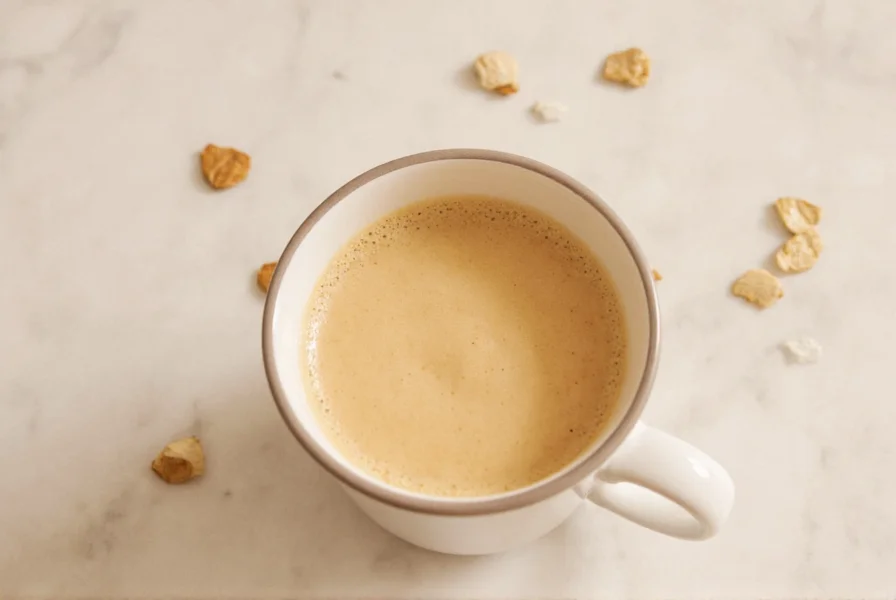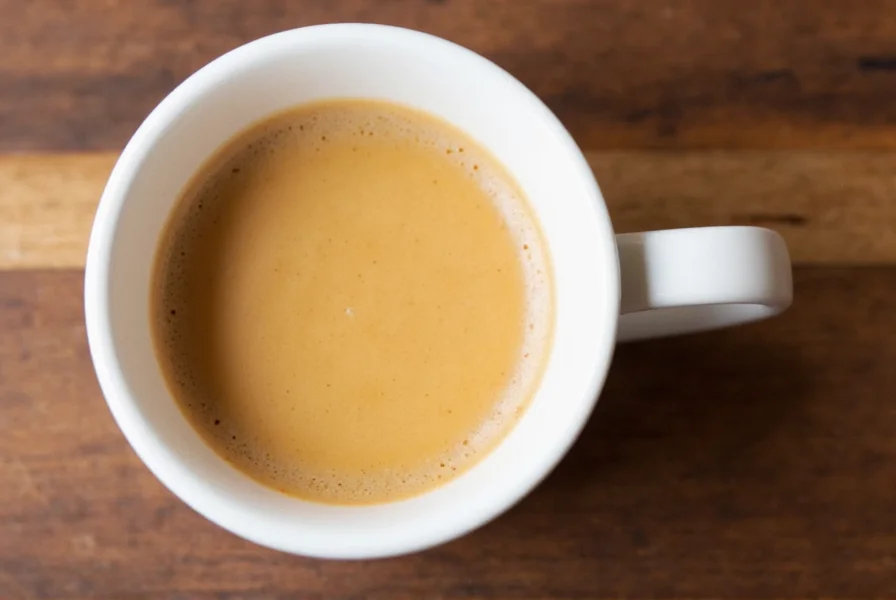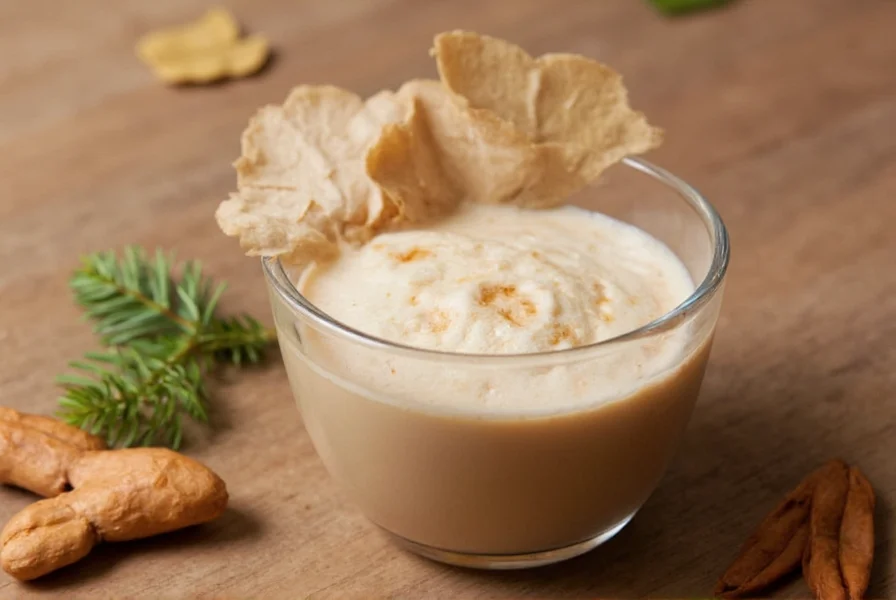A ginger latte delivers a perfect balance of spicy, sweet, and creamy flavors in every sip. This traditional preparation has gained global popularity as people discover its versatility and potential wellness benefits. Whether you're looking for a morning pick-me-up without caffeine or an evening relaxation ritual, this beverage adapts beautifully to personal taste preferences and dietary needs.
The Origins of Ginger Latte
Ginger's use in beverages dates back thousands of years across Asian and Middle Eastern cultures. Traditional Ayurvedic medicine incorporated ginger in warming drinks to support digestion, while Chinese herbalists valued it for its circulatory benefits. The modern "latte" version emerged as baristas and home cooks began adapting coffeehouse culture to non-coffee beverages, creating a creamy preparation that mellowed ginger's intense heat while preserving its distinctive flavor.
Classic Ginger Latte Recipe
Creating an authentic ginger latte at home requires just five basic ingredients and takes less than 15 minutes. The key is using fresh ginger rather than powdered for the most vibrant flavor profile.
| Ingredient | Amount | Preparation Tip |
|---|---|---|
| Fresh ginger root | 1-2 inch piece | Peel and slice thinly for maximum extraction |
| Milk | 1 cup | Oat or coconut milk creates exceptional creaminess |
| Sweetener | 1-2 tsp | Honey or maple syrup complements ginger's spice |
| Water | ½ cup | Use for initial ginger simmering |
| Spice enhancers | Optional | Cinnamon stick, cardamom, or turmeric boost complexity |
Preparation method: Simmer sliced ginger in water for 10 minutes to create a strong infusion. Add milk and sweetener, then heat gently without boiling. Strain into your favorite mug. For a frothy texture, use a handheld frother or blender after heating.

Variations for Every Preference
The beauty of a homemade ginger latte lies in its adaptability. Consider these popular modifications when making ginger latte at home:
- Turmeric boost: Add ¼ tsp turmeric and a pinch of black pepper for enhanced anti-inflammatory properties
- Golden milk version: Combine ginger with turmeric, cinnamon, and nutmeg for a wellness-focused beverage
- Cold ginger latte: Chill the ginger infusion and serve over ice with cold frothed milk
- Protein-powered: Blend with a scoop of vanilla protein powder for a post-workout recovery drink
Understanding Ginger Latte Benefits
While not a substitute for medical treatment, ginger lattes offer several well-documented wellness properties. Research shows ginger contains gingerol, a bioactive compound with antioxidant and anti-inflammatory effects. Many people report ginger latte health benefits including improved digestion after meals and reduced feelings of nausea. The warmth of the beverage itself provides comfort during cold seasons, while the absence of caffeine makes it suitable for evening consumption.
Unlike chai lattes which rely on black tea as their base, ginger lattes provide a completely caffeine-free experience. This makes them ideal for children, pregnant women, or anyone sensitive to caffeine. The difference between ginger latte and chai becomes particularly important for those seeking evening relaxation without sleep disruption.

Serving Suggestions and Pairings
Enjoy your ginger latte at optimal temperature (140-160°F) to fully appreciate its complex flavor profile. The spicy warmth pairs beautifully with:
- Oatmeal cookies or shortbread
- Coconut-based desserts
- Spiced pumpkin bread
- Dark chocolate (70% or higher)
For a complete wellness experience, sip your ginger latte slowly while practicing mindful breathing. Many cultures traditionally consume ginger beverages before or after meals to support digestion, making it an excellent addition to your daily routine.
Common Questions About Ginger Lattes
Frequently Asked Questions
Is a ginger latte good for digestion?
Yes, ginger has been traditionally used to support digestion. The gingerol compounds in fresh ginger may help stimulate digestive enzymes and reduce feelings of bloating. Many people find drinking a ginger latte after meals helps with comfortable digestion.
Can I make a ginger latte without sweetener?
Absolutely. While sweetener enhances the flavor profile, you can enjoy a ginger latte without added sugar. The natural sweetness of milk (especially oat or cashew milk) often provides sufficient balance to ginger's spiciness. For a naturally sweeter taste, try adding a small piece of pitted date during the simmering process.
How does ginger latte differ from chai latte?
The primary difference is the base ingredient and caffeine content. Chai lattes use black tea as their foundation, containing caffeine, while ginger lattes use fresh ginger as the main flavor component and are naturally caffeine-free. Chai typically includes a blend of spices like cardamom and cloves, whereas ginger latte focuses on ginger's distinctive heat with optional complementary spices.
What's the best milk for a ginger latte?
Oat milk creates an exceptionally creamy texture that complements ginger's spice. Coconut milk adds a tropical note that pairs well with ginger's warmth. Traditional dairy milk provides the richest mouthfeel. The best choice depends on your dietary preferences and desired flavor profile - each creates a distinctive ginger latte experience.
Can I prepare ginger latte concentrate ahead of time?
Yes, making ginger concentrate in advance saves time. Simmer 1 cup of sliced ginger in 2 cups of water for 20 minutes, then strain and refrigerate. This concentrate stays fresh for up to one week. When ready to serve, mix ¼ cup concentrate with 1 cup heated milk and sweetener to taste - perfect for quick homemade ginger latte preparation.











 浙公网安备
33010002000092号
浙公网安备
33010002000092号 浙B2-20120091-4
浙B2-20120091-4